Sitting on a beach somewhere on the outer coast of the Great Bear Rainforest, I’m trying to do something unusual for me—be boring and reserved.
It’s not a trait that comes to me naturally. My friends left their gear unattended while they’re off hanging food and setting up tents. It’s a perfect opportunity for me to indulge my mischievous nature. Maybe change their paddles to a left-hand feather or take goofy selfies with their cameras for later discovery. But I’m resisting because we’re on day 10 of 17 on British Columbia’s outer coast with strong winds, no current information and sketchy campsites. I’m trying to be cow-like. It’s a lesson I learned from a guy I never met.
We all have a mental list of people who are skilled paddlers but we don’t invite on a long trip. The individual may be fine company for a day or a weekend, but they just don’t fit in over the course of a long trip. It’s easier to say we just don’t like them, or they don’t match the group dynamic. Often what’s missing is something called expedition behavior.
The concept of expedition behavior dates back to Paul Petzoldt. In 1965, he founded what became known as the Harvard of the outdoors—the National Outdoor Leadership School (NOLS).
Petzoldt, who climbed Grand Teton in 1924 in cowboy boots at age 16, had a long career in the wilderness. It was after being part of the first American expedition to K2 in 1938, which ran short of food, he recognized planning, group cohesion and problem solving were as important as climbing skills.
Petzoldt’s brilliance was in codifying and teaching what makes a good group member; it’s a modern-world coda for what was once innate.
NOLS became the first outdoor school to institutionalize the often unspoken rules of good trip etiquette: Put the goals of the group ahead of your own goals—and be clear about goals to begin with. Do your share and stay organized. Take care of yourself, so you can contribute to the group. Be kind and open-hearted. Respect the cultures you contact. Pitch in and help others, but don’t do their work for them. Communicate. Be honest and accountable about shortcomings affecting the group and admit and correct your mistakes. Support the growth of team members. Be cow-like: even-keeled and moderate. Reduce annoying behaviors which might be funny on day three, cute on day five, but really annoying by day 12. Like changing everyone’s paddles to a left-hand feather when they’re not looking.
How to function in groups isn’t new. Humans evolved as roving bands—you either helped rig mammoth traps and shared meat or you were booted out of the tribe. The agricultural and industrial revolutions bringing us carbon fiber paddles along with cubicles and organizational charts made small roving bands less common. Petzoldt’s brilliance was in codifying and teaching what makes a good group member; it’s a modern-world coda for what was once innate.
Expedition behavior helped my ground become clear about what we wanted from our 17 days in the Great Bear Rainforest. We had to put miles under our hulls to catch our ferry out, but we wanted to explore the rock gardens, tidal rapids and intricate shoreline on the way. When the weather threw strong afternoon headwinds our way, expedition behavior made the conversation about getting organized for early starts easy.
It kicks in when one person is somehow always absent when the group is lugging heavy boats up the beach or hanging heavy food bags out of the reach of grizzlies. It’s at its most powerful when it becomes a tool for growth—having someone with less experience plan the route, with the support of the whole group.
I’ve used the same tents of expedition behavior in my professional life. Like an expedition along an exposed coastline, a conservation campaign is a challenging endeavor with a relatively small group of people who share a deep passion for what they’re doing.
Like a dumping surf landing on a remote island, mistakes can be costly. And, operating under pressure, we all will eventually zig when we should have zagged. The whole team needs to operate with judgment, shared knowledge, and deep trust. Tension will be high at times. A good time to channel our inner Petzoldt and be cow-like.
Neil Schulman still thinks a little mischievousness can go a long way and he’s taken to slipping beers into other paddlers’ day hatches. He likes to think he knows what Petzoldt would have had to say about it.
Paul Petzoldt, left, dreamed of nurturing outdoor leaders who knew how to live responsibly in the wilderness. | Photo: NOLS Archives



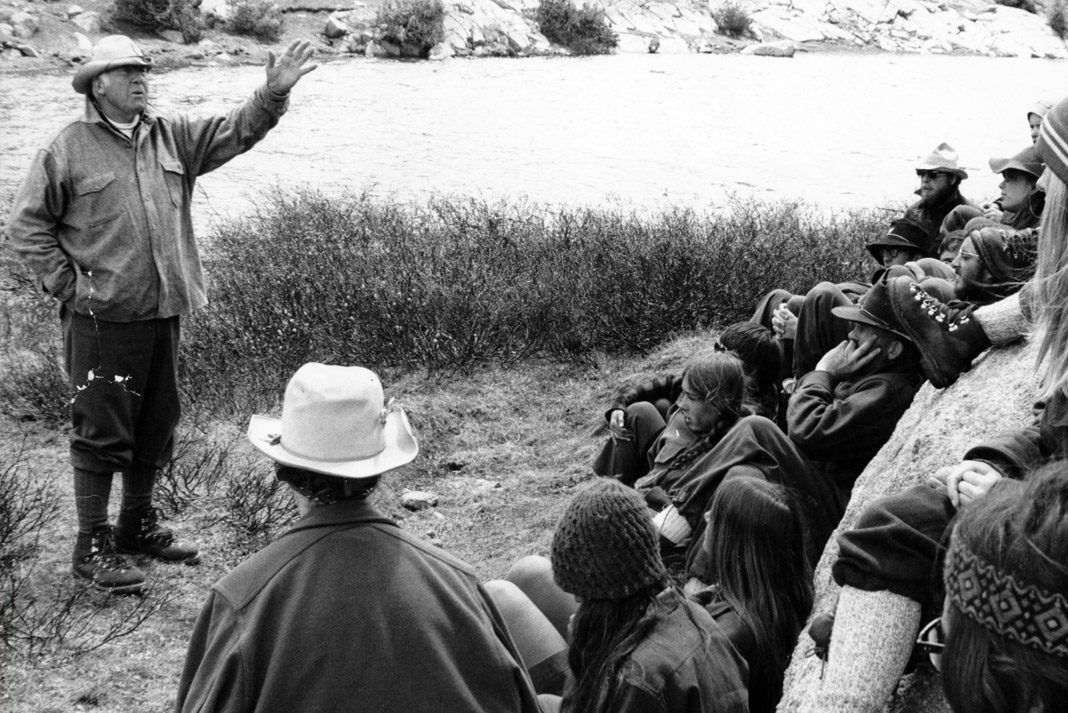
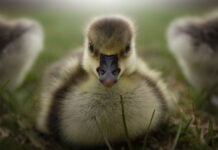
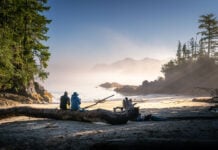
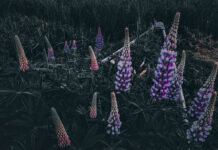

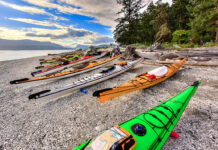

I met Paul Petzoldt in 1968 as a student on one of his early backpacking courses – I think we were in the field for six weeks. My first one-on-one with him took place a few days into the course when he asked gruffly, “What the hell are you doing in this course?!” My heart rate spiked as I stared at him blankly. “You don’t belong here,” he continued bellowing loudly enough for anyone within a hundred miles to hear.
He smiled deviously and informed me that I needed to move to the mountaineering course…15 or so miles “that way”. With a mark on a topo off I went (no concern about liability in those days: an 18 year old kid that none of the staff knew sent off alone into the Wind River wilderness to find a small group many miles away).
A week later her turned up again; again he came at me with that look of mischievous gruffness, “The instructor tells me you are too advanced for this course. Are you playing games with us?!” I explained that I had started climbing when I was 10 years old under the mentorship of a couple of men (it took me a decade to find out that they were world-class), but because I was the only kid on their trips, I had no idea how I compared. So I thought I should start on the lowest NOLS course. His laugh ricocheted off the peaks all around, “Hodgins, you’re an idiot”.
That summer he took an interest in my progress and was responsible for my later developing wilderness programs for adults and children in BC and Ontario.